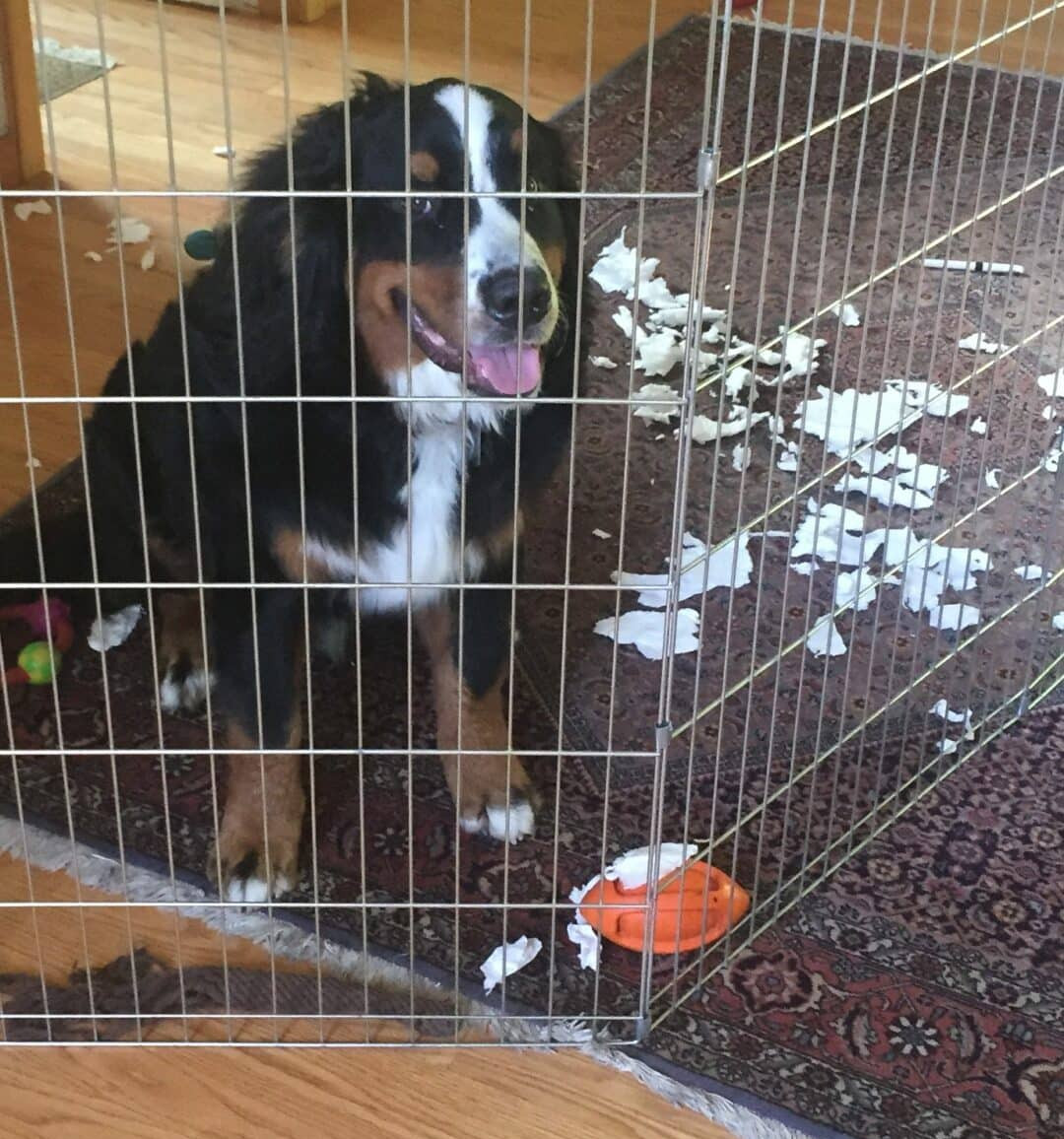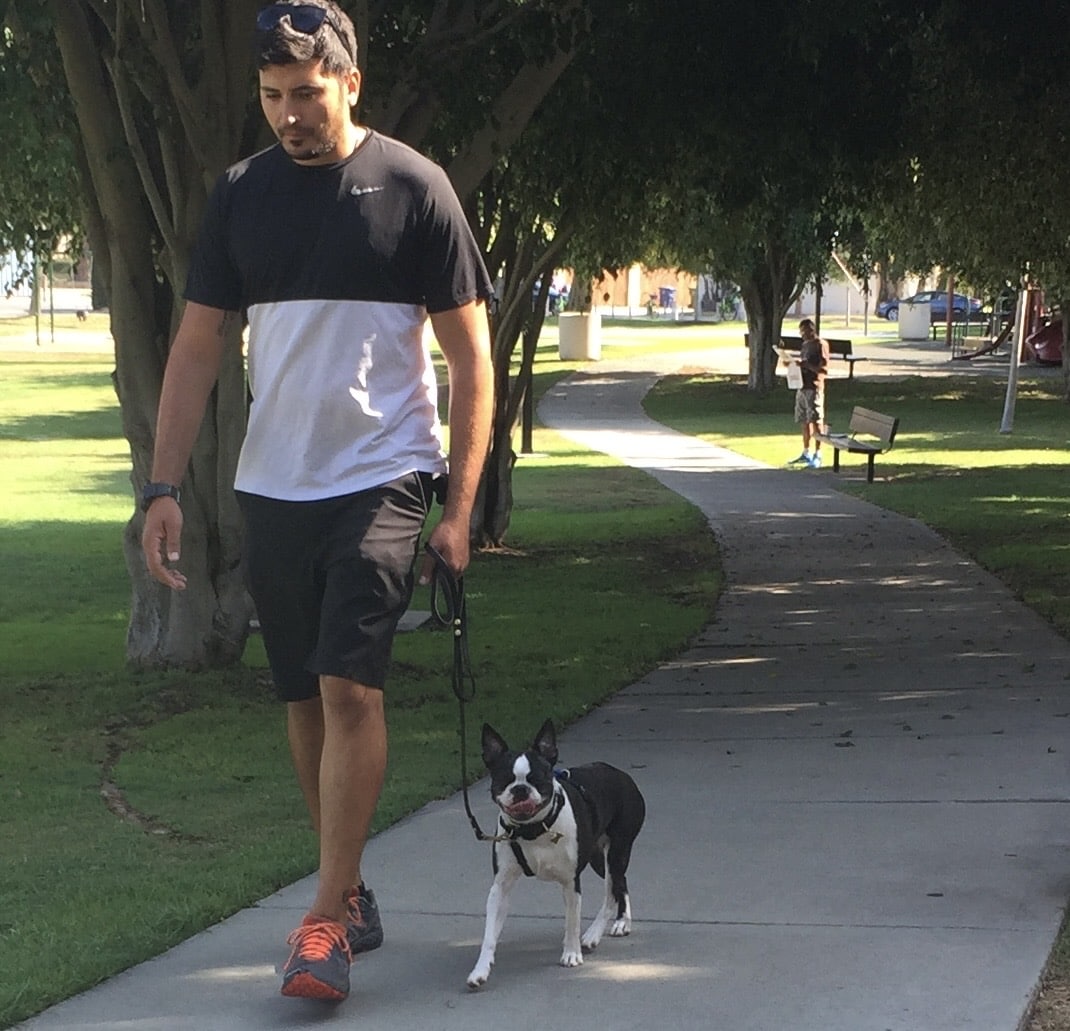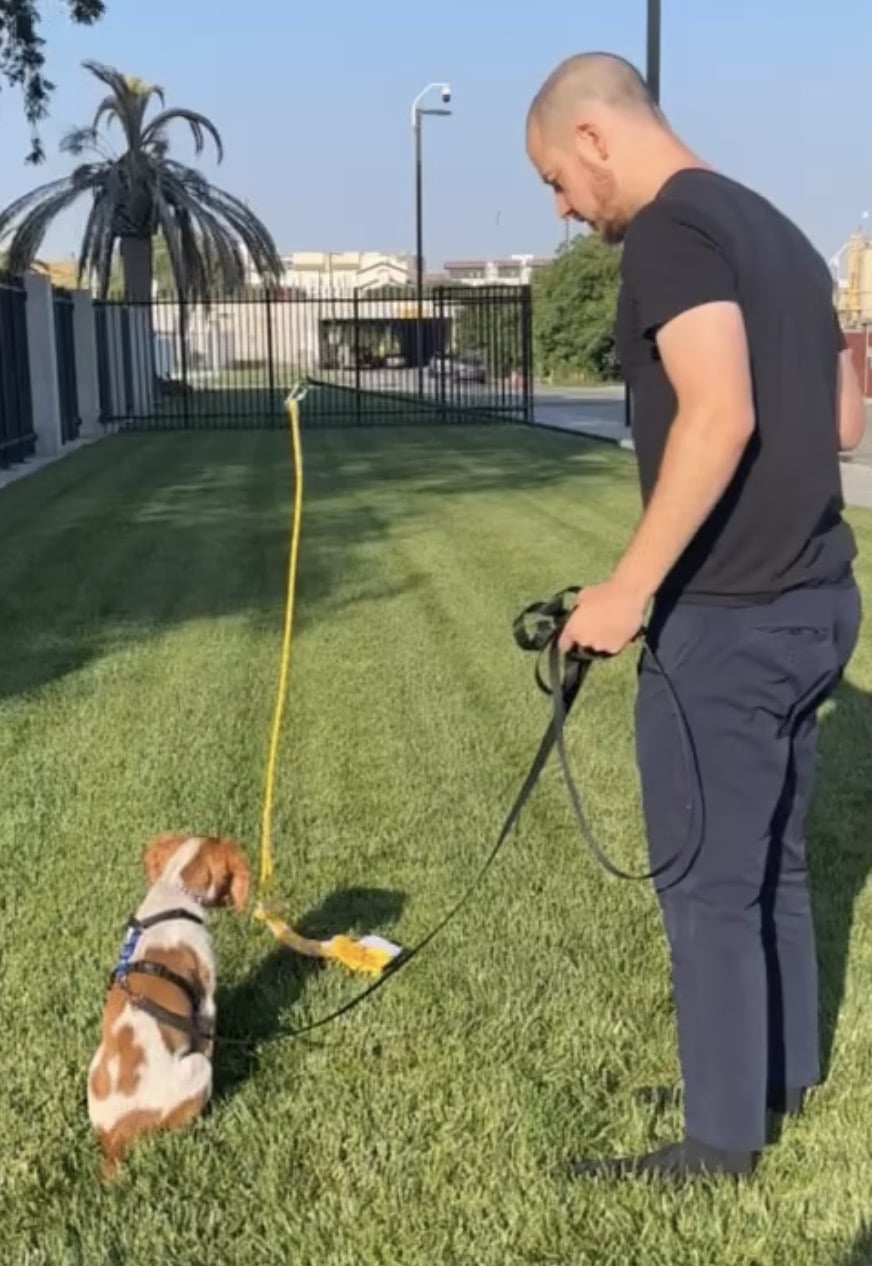Separation anxiety is a constellation of behaviors that result from underlying anxiety and insecurity. Resolving this complex issue requires a multifaceted approach that reduces a dog’s intolerance of being alone, increases their self-confidence and sense of security, reduces overall arousal/excitement and teaches them they can trust that their person will return.
Human-Canine Relationship
The relationship between a dog and their human(s) will do more to lower anxiety and build a dog’s self-confidence than any other single factor. Cooperative relationships that have clear, bilateral communication make dogs feel seen and heard and make them feel safer, even when they’re alone.

Loose–Leash Walking
Loose-leash walking is a physical manifestation of the human-canine relationship. It requires clear communication that honors the dog’s native (physical) language. Dogs who walk on a loose-leash are choosing to cooperate rather than complying due to corrections or fear. Giving dogs the knowledge and opportunity to make good choices empowers them and deepens the trust bond with their guardian(s). Loose-leash walking is one of the most useful behaviors in dog training.

Safe Spaces
Confinement is key to successful alone time for many dogs, especially in an unfamiliar environment. Confinement can be anything from a kitchen with a baby gate across the door to an exercise pen (for puppies and small dogs) or a crate, depending on the duration and the dog’s behavior during the conditioning (training) process.
Confinement is one way we can protect an unsupervised, anxious dog when they’re alone. Dogs in a panic can seem oblivious to danger and/or pain. They can do tremendous damage in a short period of time, destroying property and potentially harming themselves. They can break teeth, injure themselves on broken glass or ingest material that leads to a life-threatening intestinal blockage.
Providing anxious dogs with a den-like sanctuary of safe space is an important part of them feeling secure while alone. Instinct tells dogs when the back of their neck, spine and rear end are against something solid with a low ceiling, they can’t be attacked from behind. In this way a dog’s sanctuary can reduce overall anxiety and induce a deeper sleep. This process requires a period of creating positive associations with the safe space before they’re left alone.

For that reason, I like to incorporate crate conditioning as a part of most separation anxiety programs. The crate can be used with the door open within a larger confined area or, in short absences, as the primary means of confinement if the dog is appropriately conditioned to being in there, first.
Exercise for Anxiety
A dog whose physical exercise needs are met is almost always less anxious to start with. A dog that has daily mental stimulation (enrichment) will typically be less anxious overall.
Not all exercise is created equal, when addressing anxiety-related issues. Activity that requires mental focus is more effective because it drains mental and physical energy, and avoids exciting dogs. A loose-leash walk is more draining than a typical game of fetch, for example. A game of fetch that incorporates obedience and self-control is more draining than one that doesn’t.

Helping a dog who panics when they’re alone takes time and patience. It helps to understand that this is a legitimate fear your dog is experiencing, and recognize that there are no simple answers. Dogs are sentient beings with individual needs.
Working with a canine behavior professional who specializes in fearful and anxious dogs can help you determine what works best for your dog.
Dee Green has been a professional dog trainer and canine behavior consultant for more than 20 years. She specializes in puppies up to 18 months, and fearful, anxious and reactive dogs of all ages.
©️2024 Dee Green
